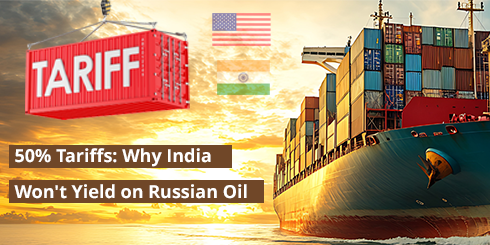Supply Chain Secrets: AI, Autonomy & COVID’s Hidden Bottlenecks
By Hiten Shah, President & CEO – MES
The COVID-19 pandemic disrupted supply chains worldwide—but what’s more concerning are the bottlenecks no one saw coming. In this revealing video, Hiten Shah, CEO of MES, discusses how artificial intelligence (AI) and autonomous operations are reshaping supply chain resilience—and why the most critical lessons from COVID still haven’t been fully implemented
across industries.
While many leaders focused on immediate issues like port congestion, raw material shortages, or container capacity, few anticipated how long the ripple effects would last—or how deeply they would expose the operational cracks beneath the surface. “COVID didn’t just break supply chains,” Hiten says, “it exposed how brittle and outdated they really were.”
A supply chain bottleneck occurs when one part of the system slows or halts the entire operation. Hidden bottlenecks, however, are far more dangerous because they’re not immediately visible. They often lie in legacy systems, outdated processes, or fragmented decision-making structures. These are the vulnerabilities that only surface during extreme stress events—like the COVID-19 pandemic. During the height of the pandemic, MES and many global companies saw these issues firsthand: decision-making bottlenecks due to manual approvals, delays from Excel-based inventory planning, and slow responses because systems couldn’t talk to one another. These problems weren’t caused by the crisis—they were exposed by it.
This is where artificial intelligence and automation now play a critical role. AI is no longer just a buzzword or a future goal—it’s the strategic foundation for modern, resilient operations. According to Hiten, AI isn’t about flashy robots or warehouse drones—it’s about forecasting demand, running simulations, identifying disruptions, and enabling smarter decisions in real time. When a supply chain is powered by AI, companies can detect signals early, pivot operations before disruptions escalate, and ultimately gain an edge in agility and customer trust.
At MES, this shift has already begun. Autonomous processes have replaced reactive ones. Teams no longer ask, “What happened?”—they ask, “What’s next?” That’s the power of predictive analytics, real-time data flow, and AI-enabled platforms like SAP and other digital
ecosystems.
Most traditional supply chains were built on reactive models—responding to issues after they occurred. While this was tolerable in stable times, it’s simply not sustainable in today’s volatile environment. Global logistics networks are being tested daily by shifting trade policies, climate-
related disruptions, cyber threats, and regional instability. Autonomous operations flip the script. They enable a supply chain that can self-monitor, self-correct, and adapt without needing a chain of human approvals. This doesn’t replace people—it empowers them to focus on strategy,
innovation, and exception management rather than firefighting.
For example, AI-driven demand forecasting can reduce stockouts and overstocks. Automated procurement tools can detect price fluctuations or geopolitical risk and recommend alternative suppliers before a disruption hits. These aren’t futuristic features—they’re already in play at
MES and with industry leaders around the world.Hiten is quick to point out: AI isn’t a silver bullet. You can’t plug it in and expect miracles. It requires the right culture, the right leadership, and a shift in how your organization makes decisions.
“To future-proof your business, you must invest in both technology and the change management that enables it,” he says. That means training teams to use data effectively, building cross-functional communication between IT and operations, and establishing clear KPIs for autonomous systems. Without these foundations, AI will only automate bad habits faster. “If your systems can’t talk to each other, your business can’t respond. And if your data can’t predict, you’re always reacting too late.”
The true lesson of COVID isn’t just that supply chains broke—it’s that they broke in ways most businesses never prepared for. Resilience isn’t about bouncing back. It’s about building systems that don’t break the same way twice. For MES, this means stress-testing processes regularly,
mapping out tier-2 and tier-3 supplier dependencies, and conducting “war games” for potential disruptions. It’s also about investing in real-time visibility—because if you can’t see your supply chain, you can’t secure it. Companies that emerge stronger from the next disruption will be
those that invest now in autonomy, transparency, and data intelligence. Those who wait for stability will always be two steps behind.
Here are five ways to implement Hiten Shah’s insights into your own supply chain strategy: adopt predictive tools to forecast disruptions and simulate demand scenarios; enable system integration and eliminate silos in data flow; automate high-impact areas like procurement and inventory; create a resilience roadmap that looks beyond quarterly metrics; and train leadership and teams for strategic agility.
AI and autonomy are not trends—they are the new operating standard for modern supply chains. COVID was a wake-up call. The question now is whether organizations are still snoozing or stepping up. Hiten Shah’s message is simple: resilience isn’t a checkbox. It’s a culture. And the smartest companies are already rebuilding stronger systems before the next disruption arrives.
Watch the video from Hiten Shah https://vimeo.com/1089150641




